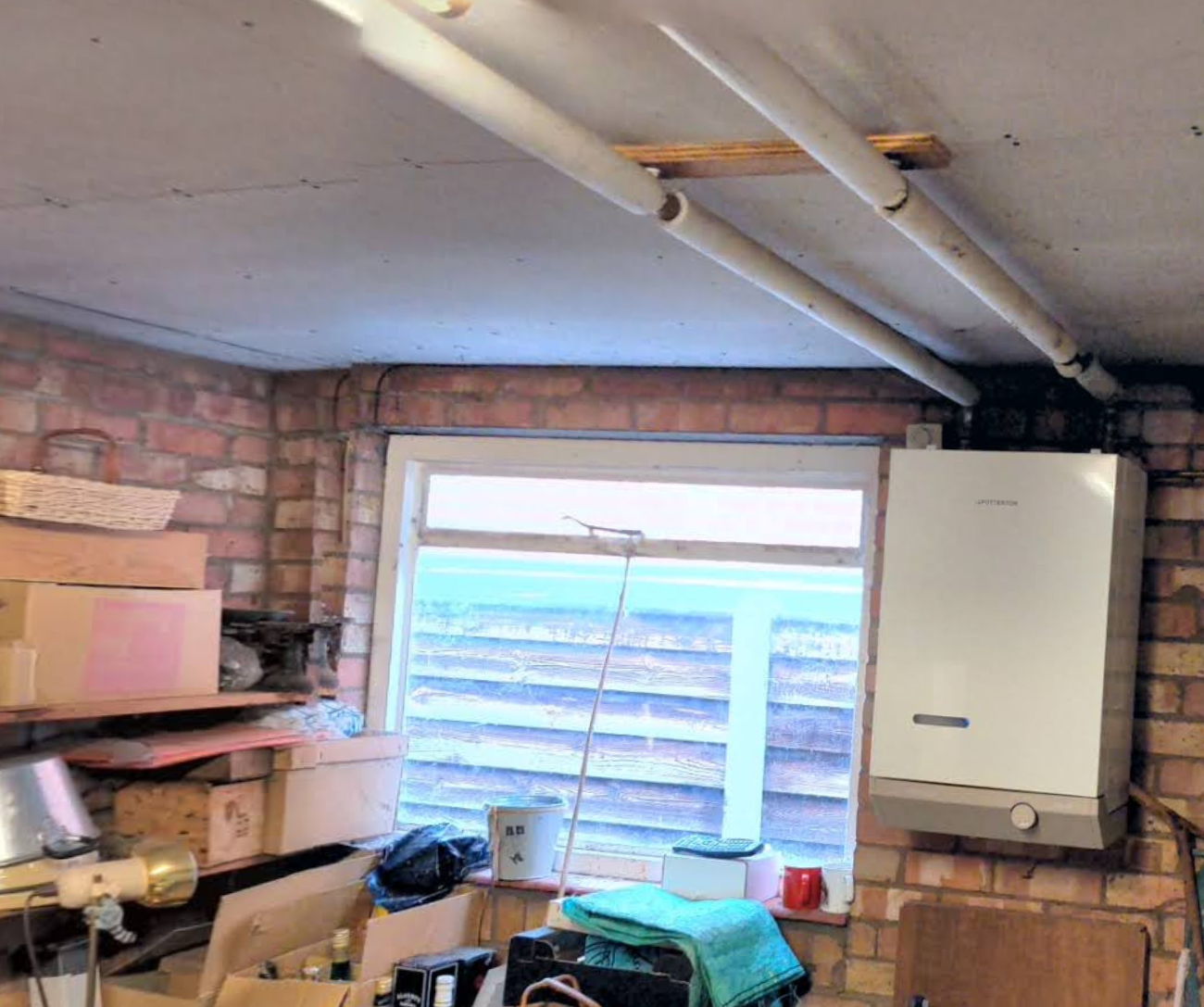Hello,
We are currently in the process of moving house. The house is a 1967 build and seems to have a traditional gravity fed hot water and heating system running on an non condensing bolder (Potterton Netaheat). We are trying to get an idea on how expensive this system will be to run, how it will meet our demands, how I can put programmers in (it just runs of non programmable thermostats). Also, ideally, budget allowing we would increase the tank size and fit a new condensing system boiler or combi (also to sack off the tanks in the loft in a new system). However, for the life of me, I cant work the configuration out. We don't have permanent access to the building yet, so I only have a few pics.
The boiler only has water 2 pipes (and one gas). I assume these to be flow and flow return for the central heating, but also the hot water???? I can see no mains water entering the boiler.
Just to the top left of the boiler is, what I assume to be, the hot water control. the wire seems to trace back to a valve on the other wall.
On the opposite wall to the boiler we can see the pipes, pumps and valves
Now we know there are at least 2 heating circuits controlled by 2 room thermostats (dumb). I have only been able to find 2 thermostats and the control by the boiler. In the configuration we can see 3 valves (T1, T2 and HW). 2 of these are for the heating circuits (T1 and T2). Q: could the 3rd (HW)be for the hot water????? Ive never heard of a system where the hot water and heating runs off the same pump controlled by but valves? I can only assume that the mains water must be going to the loft and feeding the system from there?
For info here is a really poor shot of the tiny hot water tank and of the cold water tank in the loft. Sorry for the terrible shots that give little info, by this point the estate agent thought i was very strange.


Lastly, here is a diagram that I *think* represents the system we have (minus the second heating circuit). Would you agree?

We are currently in the process of moving house. The house is a 1967 build and seems to have a traditional gravity fed hot water and heating system running on an non condensing bolder (Potterton Netaheat). We are trying to get an idea on how expensive this system will be to run, how it will meet our demands, how I can put programmers in (it just runs of non programmable thermostats). Also, ideally, budget allowing we would increase the tank size and fit a new condensing system boiler or combi (also to sack off the tanks in the loft in a new system). However, for the life of me, I cant work the configuration out. We don't have permanent access to the building yet, so I only have a few pics.
The boiler only has water 2 pipes (and one gas). I assume these to be flow and flow return for the central heating, but also the hot water???? I can see no mains water entering the boiler.
Just to the top left of the boiler is, what I assume to be, the hot water control. the wire seems to trace back to a valve on the other wall.
On the opposite wall to the boiler we can see the pipes, pumps and valves
Now we know there are at least 2 heating circuits controlled by 2 room thermostats (dumb). I have only been able to find 2 thermostats and the control by the boiler. In the configuration we can see 3 valves (T1, T2 and HW). 2 of these are for the heating circuits (T1 and T2). Q: could the 3rd (HW)be for the hot water????? Ive never heard of a system where the hot water and heating runs off the same pump controlled by but valves? I can only assume that the mains water must be going to the loft and feeding the system from there?
For info here is a really poor shot of the tiny hot water tank and of the cold water tank in the loft. Sorry for the terrible shots that give little info, by this point the estate agent thought i was very strange.
Lastly, here is a diagram that I *think* represents the system we have (minus the second heating circuit). Would you agree?
Attachments
Last edited:






